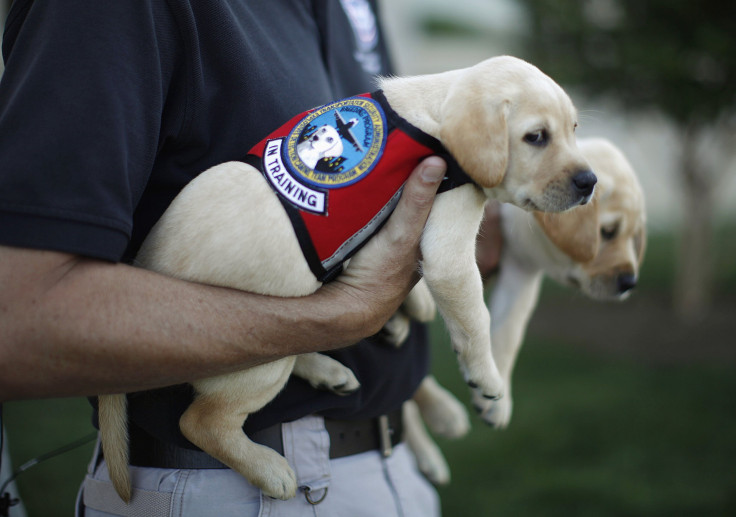Why TSA’s Canine Unit Is In The Doghouse

Transportation Security Administration officers are used to criticism by now, but a new report released on Thursday by the Government Accountability Office takes aim at the officers’ secret weapon: the agency's dogs.
The TSA uses “threat detection dogs” in the National Canine Program to search for explosives at airports, but after following several teams over the past year, the GAO believes the TSA may be wasting millions of dollars in taxpayer money on dogs that can’t actually detect specific threats.
Over the past three years, the cost of keeping the German Shepherds, Belgian Malinoises, Hungarian Vizslas and other breeds with keen noses on the government’s payroll has nearly doubled from $52 million to more than $100 million. The TSA recently announced plans to field 120 passenger-screening canine teams at airports across the nation by the end of the year, after completing effectiveness assessments at Miami, Oklahoma City and Washington Dulles airports this month.
But the GAO says the canine teams aren’t even being used efficiently or effectively.
The government watchdog agency looked at data the TSA kept on its canine program from September 2011 to July 2012 and examined the extent to which TSA-deployed passenger-screening canine teams use a risk-based approach. To do the latter, the GAO conducted visits to four geographic locations that were selected based on the number and type of canine teams deployed.
In its report, the GAO derided the TSA, saying it repeatedly failed to meet training requirements of four hours every four weeks, and it vastly underused the 70 (out of a total of 760) canine teams trained to detect explosive odors on passengers.
The GAO also questioned why the TSA began deploying the passenger screening canine teams in April 2011 before determining their operational effectiveness or identifying where they would be most effective.
The report caught the attention of Rep. Bennie G. Thompson (D-MS), ranking member of the Committee on Homeland Security.
“The TSA has not determined whether passenger-screening canine teams can mitigate threats at airports, and despite inconclusive analysis, it has invested at least $19 million a year in the program,” Thompson said. “Without proper assessments and scientific evaluation of screening programs, the TSA will continue to miss the mark in ensuring that taxpayers’ dollars are used in effective programs that improve passenger security while complementing proven screening programs.”
The TSA began its National Canine Program in 1972, and its officers and dog teams go through 10-week training courses at Lackland Air Force Base in Texas to identify a variety of dangerous materials while building an effective unit. According to the TSA, training includes search techniques for aircraft, baggage, vehicles and transportation structures, in addition to procedures for identifying dangerous materials on passengers and “alerting” the handler of their presence.
Agency spokesperson David Castelveter said that while the agency conducts monthly reviews of its programs, it “acknowledges the need to further examine the data collected over a longer term.”
“To that end, the National Canine Program will re-establish annual comprehensive assessments. Beginning in March 2013, the TSA plans to expand the Canine Website to improve functionality and reporting capabilities addressing a GAO recommendation.”
Castelveter said the TSA would continue to collaborate with DHS' Science & Technology Directorate to conduct assessments of the passenger-screening canine program in airports across the country, in accordance with GAO recommendations.
For now, however, the program shows no signs of slowing down.
© Copyright IBTimes 2024. All rights reserved.






















